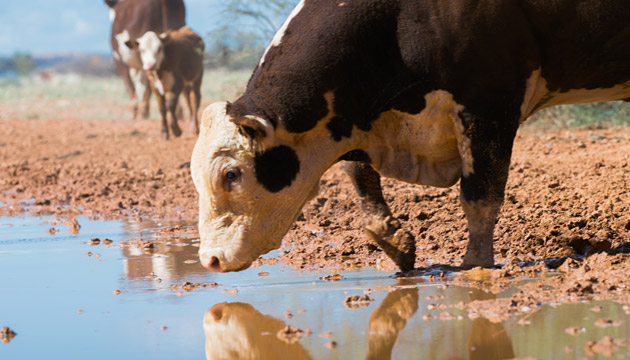With an ethos of hard work leavened with a dose of desert-dry humour, the Costello family has created a vibrant pastoral business in our red centre.
Story by Genevieve Barlow Photo by Robert Lang
One day in March, the Costello family headed out for a Sunday outing – a jetski on a lake. It was all very ordinary except for a few things. One: though it took an hour or two to get there, they hadn’t left home. Two: the lake was in the Simpson Desert, in one of the driest parts of the continent – the far south-eastern corner of the Northern Territory. This is where the Costellos live and work.
Out here in the arid floodplains of the rarely running Finke River, the Costello spread, a parcel of four stations, stretches across almost 2.8 million hectares of Australian rangelands. It takes in the continent’s officially declared geographical centre. Here, in the red heart of the nation, amid spinifex-covered sand dunes, mulga scrub, gibber plains and spectacular terracotta-coloured jump-ups, two generations of the tight-knit Costellos run cattle numbers matching the spread, a beast for every square kilometre.
“It’s not hot, it’s proper hot,” says Colleen Costello, to describe the circa 48-50 degrees Celsius that cooks the country and all but the hardiest of desert dwellers at the height of summer. Colleen, 54, and her husband Donny, 53, live on New Crown, the 800,000ha centre of the enterprise they run with their equity partner and old horse training/racing mate Viv Oldfield and his family. Their daughter Tanya and her husband Ben Brooks live on Lilla Creek (300,000ha), their son Peter and his wife Raquel live on Andado (1.07 million ha) and Colleen’s brother David ‘Widge’ Fogarty and his partner Kylie Fraser live on Horseshoe Bend (615,000ha). The entire outfit is called Crown Point Pastoral and to cross it at its widest point would take six hours of sometimes bone-grinding travel.
The enterprise turns off at least 5000 head of cattle a year – numbers rise if the seasons are good – into markets as varied as the country itself. There’s the northern live cattle export market, the boxed beef market and the southern fat cattle market. The enterprise’s location – halfway between the northern and southern markets – offers strategic advantage. This is part of its success. Another is that it relies on water drawn from the Great Artesian Basin. Plus the outfit also has a 1780ha spelling point for cattle 16 trucking hours south, at Tintinara in South Australia, near Naracoorte saleyards and Murray Bridge abattoirs, where Australia’s meat buyers flock to fill foreign and domestic orders.
This story excerpt is from Issue #110
Outback Magazine: Dec/Jan 2017










